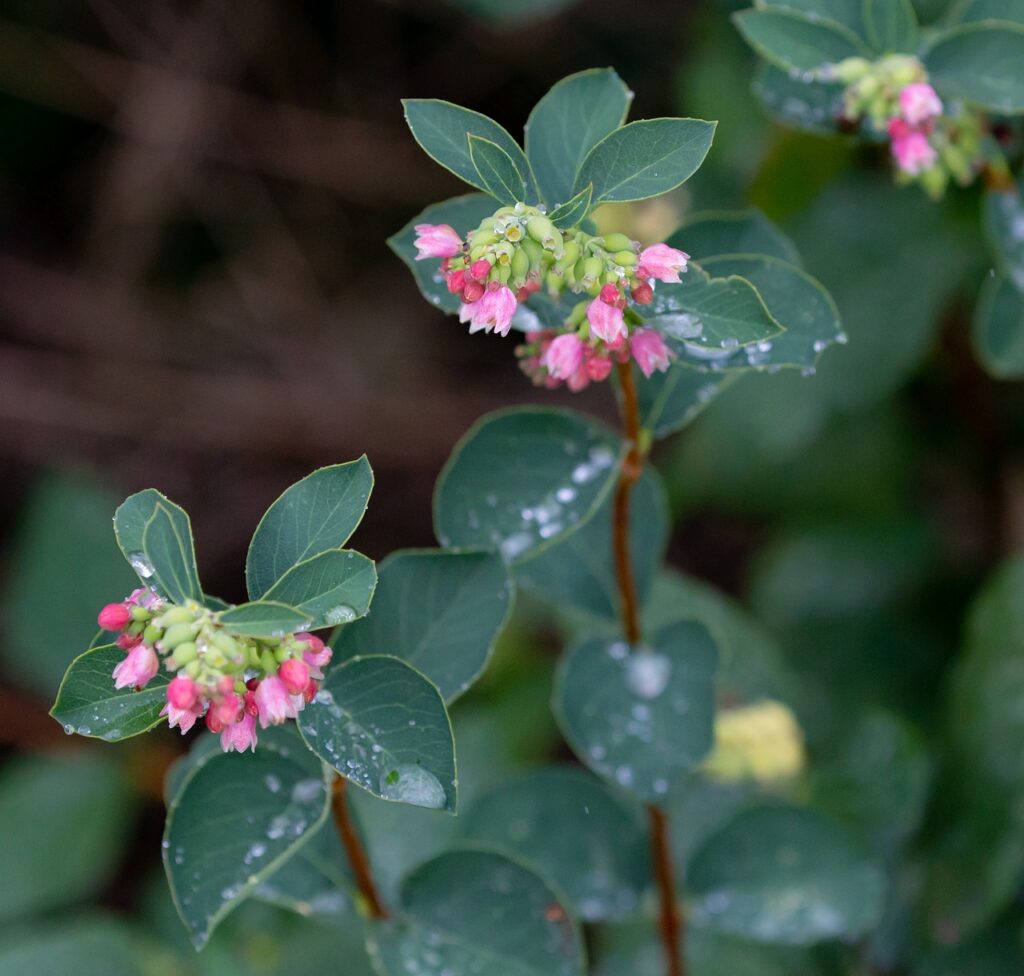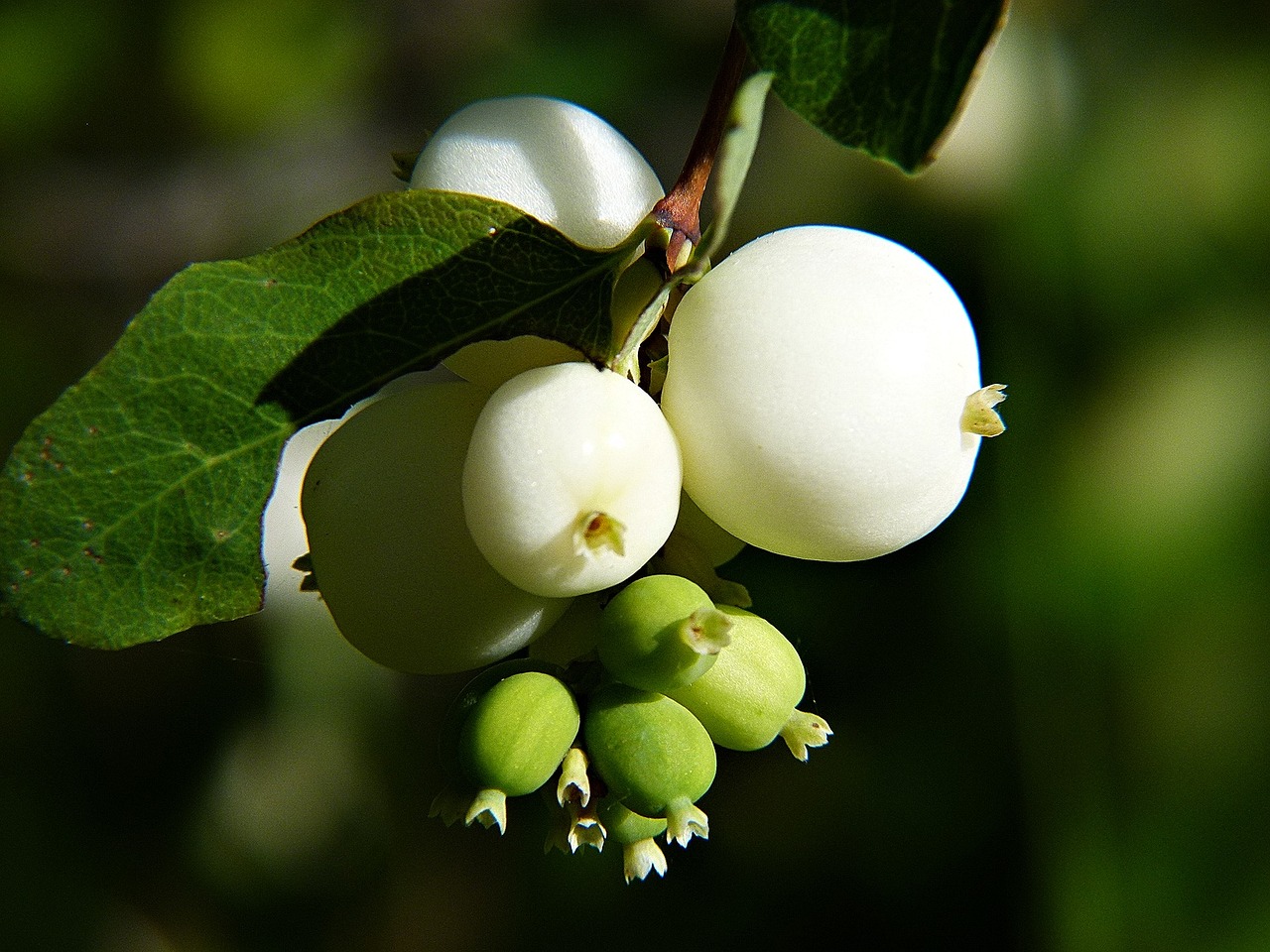

Published in the News-Review January 3, 2025
By: Julie Burchstead
Question: While hiking locally, I often see snowberry bushes that have white berries fall through winter. Is snowberry a good native plant to add to my yard?
Answer: Common snowberry, or Symphoricarpos albus, a small deciduous shrub that is found in both Douglas-fir and white oak forests along the west coast, can be a great addition to a home garden for many reasons.
For gardeners, January can be dreary. But the rain and chill that keeps us indoors, also makes it a great month for dreaming and planning for our gardens to be. Winter is also a perfect time to reimagine our gardening goals and begin to select plants to help bring those goals to fruition. In a world where so much seems outside our control, where we are uncertain where to focus, or if our efforts will even be significant in bringing about change, taking small steps in our gardens is not only personally healing, but when multiplied by gardeners in many plots, we really can make a difference.
Adding native plants to home gardens helps weave together habitat and food sources for our native pollinators and birds in ways many exotic plants cannot. A garden blend of natives and exotic favorites (as long as they are not invasive) can not only create a feast for the eyes, but be environmentally beneficial as well. But how do we choose which ones?
Our gardens become ecological systems. Botanist Robin Walls Kimmerer writes of looking at plants in spaces to determine if they are “hoarders” or “sharers” in the ecological economy. To promote survivability, nature favors systems of mutual sharing so all can flourish. When we plant predominantly exotics, far removed from the places where they evolved, and place them into a system in which they have no natural relationships, sometimes they become hoarders of time and space and resources. Exotic plants use resources, but some provide little, inaccessible, or ill-timed food and shelter to share in supporting the new environment in which they are planted. Adding native plants to our gardens can help restore the balance and native snowberry can be a good choice.
Symphoricarpos albus is a gentle user of resources. Once established, it has moderate water needs. It tolerates our wet winters and dry summers and a variety of soil types. Its open branching pattern and moist deciduous leaves placed it on OSU’s list of fire-resistant plants. Deer will eat snowberry, but it is not a preferred browse. Snowberry provides critical understory shelter and nesting habitat for several mammals and birds. The tiny, clustered, bell-shaped pink flowers (late spring to early summer) feed bumblebees and hummingbirds, and the plant is also a good host to the larval stage of some beneficial insects, placing it on the list of recommended native plants for the Pacific NW by Xerces.org. Snowberry’s white fruit is not palatable to people, but provides a well-timed protein and fat source for mammals and birds such as flycatchers, wild turkeys, and mountain bluebirds, particularly when nothing else is available.
In my yard, some interspersed snowberry provides a lovely understory along some shady fence lines as a great neighbor to vine maples, western azalea, camas, hostas, fringecup, and assorted ferns. Snowberry can tolerate semi-shade to full sun. My three-year-old plants are now 3-4 feet tall and about 2-3 feet wide. Snowberry can reach heights up to 10 feet, however it is very prunable. It spreads by rhizome, but is not aggressive. My only complaint is snowberry seems to be highly susceptible to powdery mildew, so avoid overcrowding, top watering, and especially refrain from watering late in the day in summer.
Depending on your garden’s current plant community, snowberry may indeed be a perfect addition. One of these grey January days, think about taking inventory of your own garden. Do enough of your plants behave as sharers, contributing to the ability of the community to flourish as a whole? Or is it time to make some changes?
Do you have a gardening or insect question? Contact the Douglas County Master Gardeners at douglasmg@oregonstate.edu or 541-672-4461 or visit 1134 SE Douglas Ave., Roseburg. Douglas County Master Gardeners are trained volunteers who help the OSU Extension Service serve the people of Douglas County.


